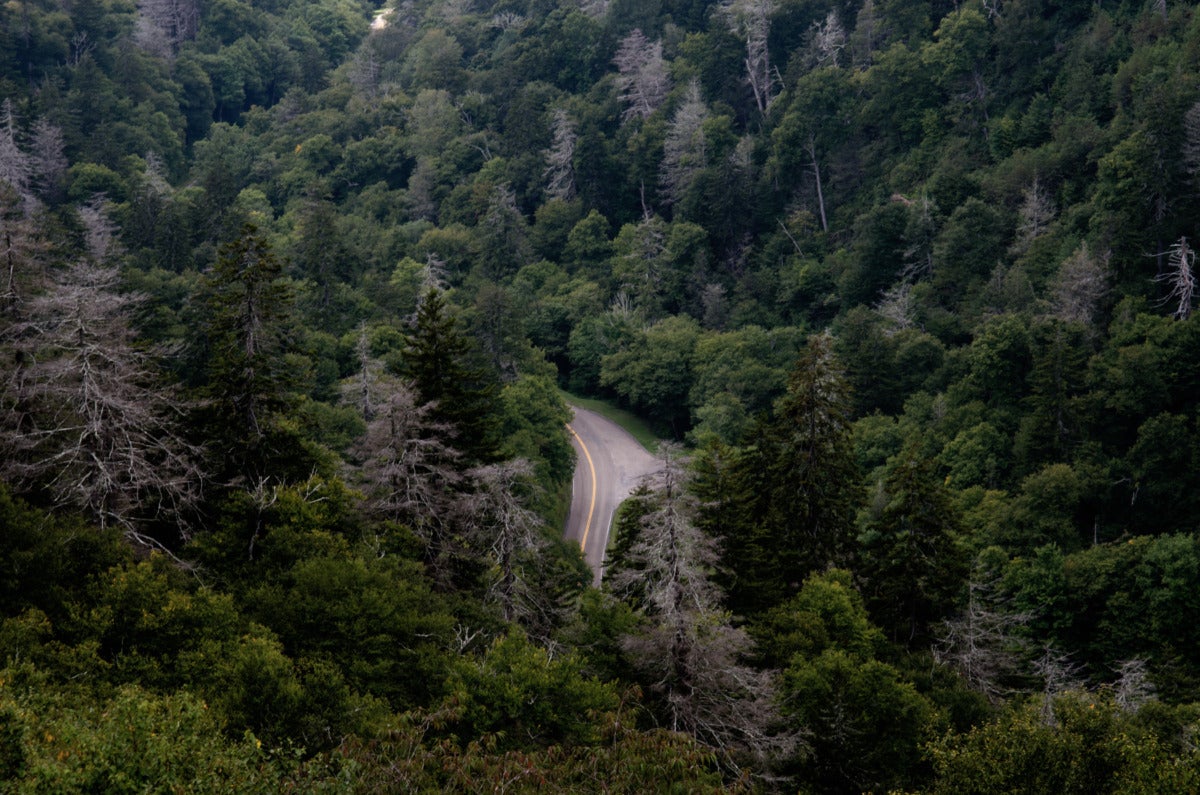
In this piece from our 2020 print annual Laws of Salvage, artist Stacy Kranitz explores the feminine archetypes and the Mid-South. This year, Kranitz published her first monograph, As It Was Give(n) to Me, including several of these images. As It Was Give(n) has been short listed for the Aperture First Book Prize. All photographs are by Stacy Kranitz unless otherwise noted, courtesy the artist and Tracey Morgan Gallery, Asheville.
Running between Maryville, Tennessee, and Cherokee, North Carolina, Highway 441 crosses up and over the Smoky Mountains, the highest subrange in the Appalachian mountain chain. It’s a picturesque landscape, caught between fantasy and reality, that attracts tourists and visitors with a desire for elusive authenticity. The Smoky Mountains are a site of periodic erasure, beginning with the federal government’s removal of the Cherokee in the 1830s and followed by a second government-dictated displacement—of white settlers a century later—during the creation of the Great Smoky Mountains National Park. These mountains vacillate between exuding a backward-looking nostalgia—one that romanticizes the very things that were eradicated from the area over the course of the last two hundred years—and a more progressive desire to look at this moment with a sober and unsentimental eye. The stark difference between these opposing viewpoints leaves behind a strange cultural residue.
I was introduced to this landscape as a teenager through Catherine Marshall’s Christian romance novel Christy and the subsequent television mini-series adaptation. It tells the story of the titular young missionary worker, who goes into the Smokies in 1912 to teach poor mountain children how to read and write. Christy is initially sure of herself, her faith, and her mission but soon becomes undone by the people around her as she opens herself up to the idea that there are many versions of right and wrong; of being good, true, and kind; and many ways to be loved and loving.
I have always been captivated by archetypical depictions of mountain women: the Maw Maw; the Granny Witch; the Spinster; the Midwife; the Missionary; the Near-Feral, Barefoot, Spread-Legged Slut; and the Glamorous, Country-Singing, Buxom Beauty—they all speak to parts of me. After many years as a visitor, I eventually moved to the foothills of these mountains and settled in a small cabin in the woods on the Cumberland Plateau, where I spend a lot of time studying the lives of women who lived on this land before me.
I fell under the spell of Dolly Parton songs and the commodified mountain empire she built, which has dramatically transformed her hometown of Pigeon Forge, Tennessee. I am particularly enamored with the Walker Sisters of Little Greenbrier, five spinster women who refused to leave their homesteads when the Great Smoky Mountains National Park was officially formed in the 1930s. When the park opened, these women became a popular tourist attraction as visitors hungered for a piece of the primitivist mountain lifestyle the park had destroyed. I have studied Doris Ullman’s photographs of traditional Appalachian artisans from the 1920s and ‘30s, subsequently published in the 1937 book Handicrafts of the Southern Highlands. Mountain women were taught crafts that were part of their ancestral traditions, but the outsiders who ran the teaching programs controlled aesthetic and marketplace decisions.
I became riveted by the story of Barbra Loden’s escape from these mountains as a teenager; she became a pin-up model and returned to the Smoky Mountains as Elia Kazan’s mistress and collaborator on his film Wild River, which depicts the removal of white settlers by the Tennessee Valley Authority. I am moved by Loden’s film Wanda, which depicts a woman teetering on the edge in a desperate Appalachian landscape. Wanda is an archetypal mountain woman, the opposite of the kind of feminine nobility Christy symbolizes. Between the two exists a spectral range of possibilities for any woman seeking to understand her own selfhood in these mountains. I became enchanted by the Cherokee creation story of Selu the Corn Mother, the goddess of the harvest, wisdom, magic, and hunting. I became captivated with the strength and resilience of the character Lydia Moore in Wilma Dykeman’s novel The Tall Woman. I eventually came to the scholarship of Kathy Kahn and Jessica Wilkerson, whose research traces the history of women-led social justice movements in these mountains.
As a documentary photographer, I conjure up a world where my fantasies rival my desire to provide a realistic portrayal of this place. As I began to embrace the mountains in my photographs, it became clear that the very idea of a “realistic portrayal” is part of that fantasy. Missionary workers like Christy traveled to these mountains with a fixed and limited understanding of right and wrong, and they imposed that simplified moral binary onto the inhabitants of the region. The documentary tradition I participate in operates as an extension of the missionary legacy of cultural invasion.
These photographs form a guide of sorts, document a journey situated in the tenuous space between the real and the imaginary. They seek to discover the complex ways we bury and reclaim our histories.
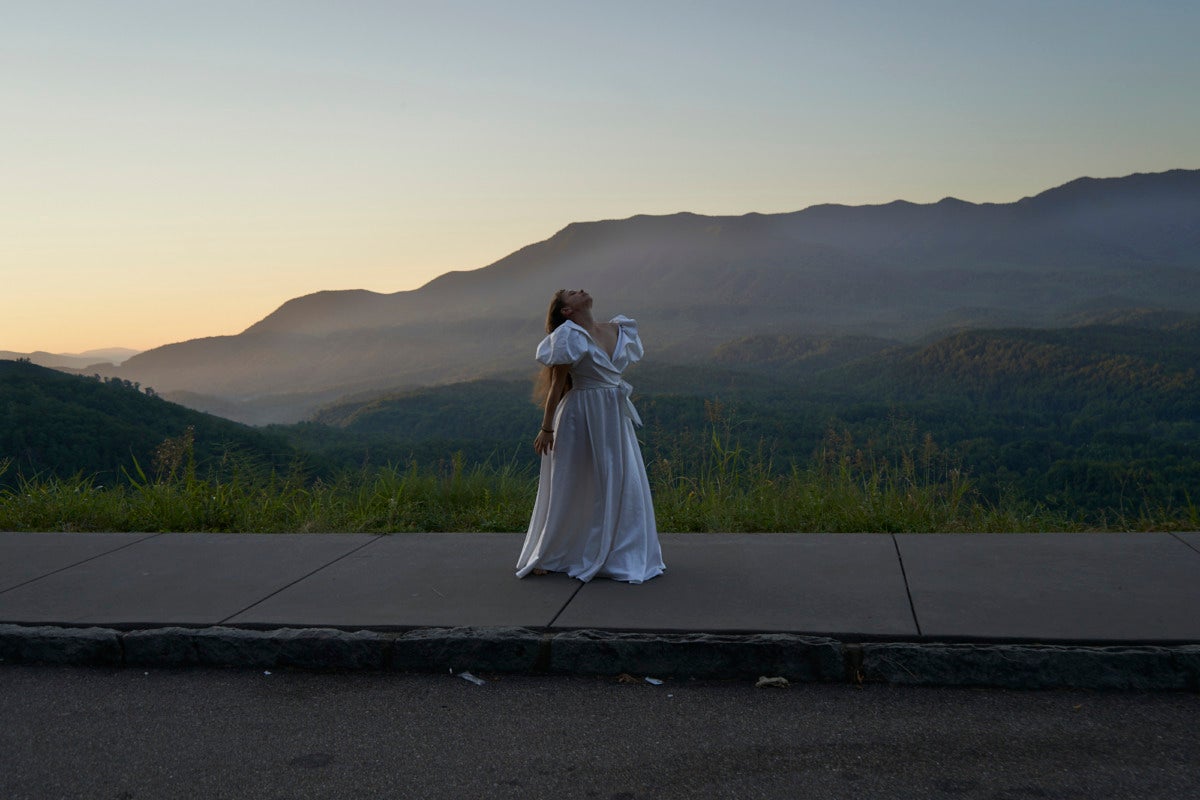
To understand the Great Smoky Mountains National Park, it is best to stop thinking about it as a site of preservation. It is a site of erasure and reconstruction, a manufactured fantasy built out of our desire for a pristine natural landscape.
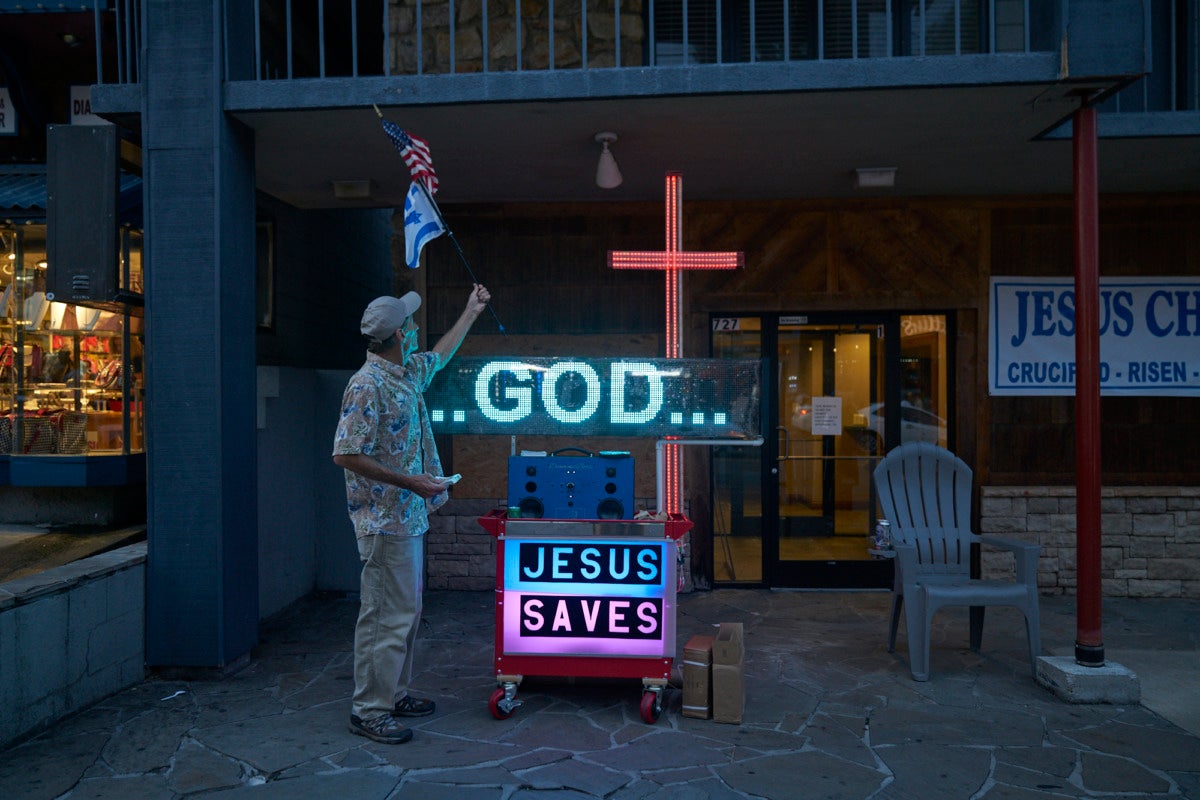
Brought to the region by missionaries who followed the frontier explorers into the wilderness, Christianity plays a significant role in mountain culture.
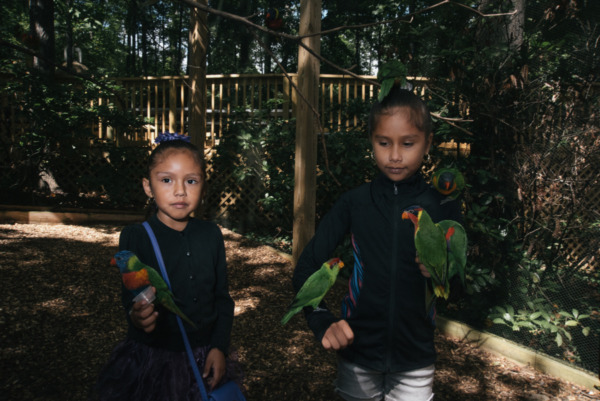
At Parrott Mountain and Garden of Eden, visitors interact with exotic tropical birds and stroll through a Bible-themed garden.
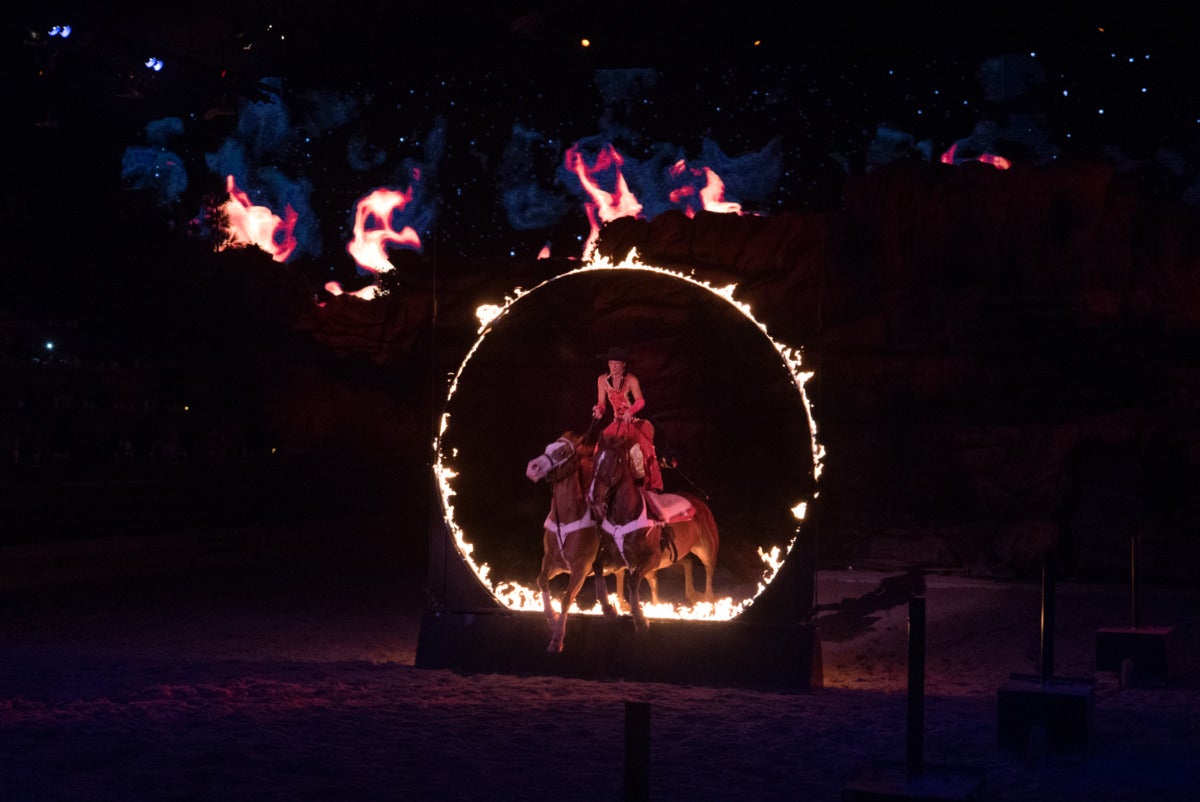
In 2018, Dolly’s Stampede dinner theatre removed the word Dixie from its title. This change was not about historical accuracy. Instead, it represents both Parton’s nonconfrontational approach to southern nostalgia and her business savvy, since the decision was based on the future financial stability of an attraction that needs an increasingly diverse crowd to maintain a profit. Inadvertently, this change happens to reflect a more accurate version of the region’s role in the Civil War.
Despite the significant number of confederate flags being sold and displayed in the Smoky Mountains, eastern Tennessee was overwhelmingly pro-Union and only four percent of Sevier County—where the dinner theatre is located and where Parton was born and raised—voted in favor of secession.
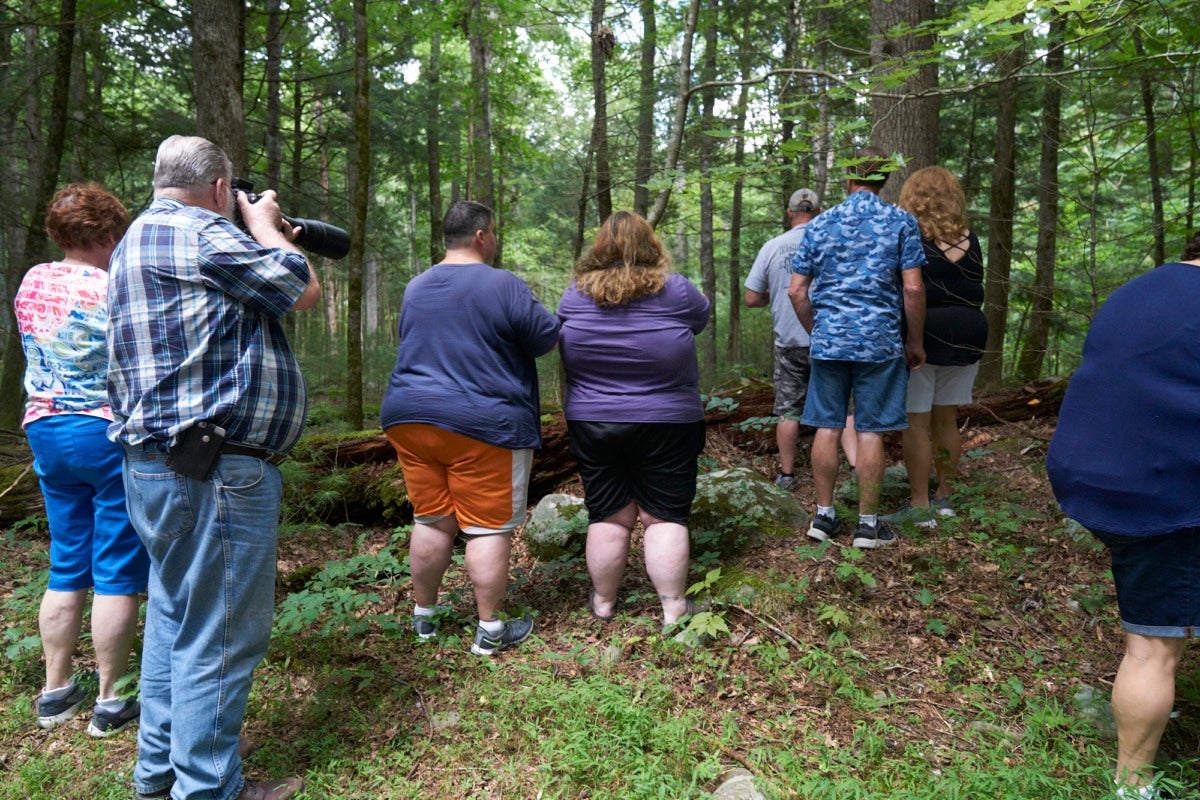
Confederate-themed amusement has played a long-standing role in Pigeon Forge. The theme park that would eventually become Dollywood originally opened in 1961 as Rebel Railroad, a joint enterprise by brothers Grover and Harry Robbins. It simulated a ride on a confederate railroad as it was being attacked by Union soldiers, concluding in a replica of an old mountain town.
The black bear is an often-anthropomorphized, totemic symbol of the Smoky Mountains.
Tourists are eager to have direct encounters with bears, leading to the existence of roadside attractions called bear pits.
At the Three Bears General Store in Pigeon Forge, you can choose from thousands of bear-themed items for sale, including lamps, blankets, stuffed toys, keychains, magnets, rugs, stickers, and coffee mugs. Upstairs you can purchase a ticket to feed live bears living in a cement pit.
Inside the park its, traffic clusters known as “bear jams” are common. Tourists often excitedly leave their parked cars in the middle of the road just to get a glimpse of a black bear in the wild.
If you ever happen to a bear, don’t run. If you hope to have any chance of surviving, you must scream and yell at the bear, fight back, throw rocks, then sticks.
Do not play dead. It will eat you. Make noise and run.
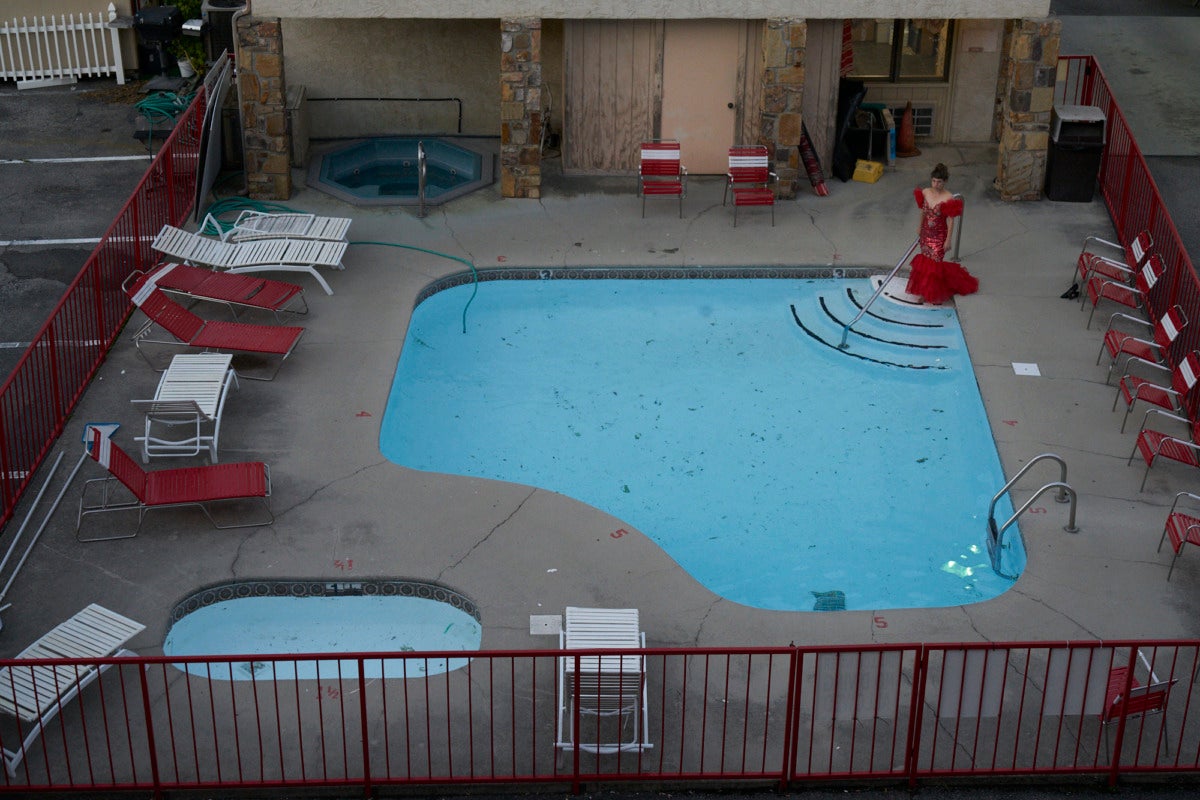


On my trips through the Smokies, I often sleep in my car in Walmart parking lots or, sometimes, in hotel parking lots. I steal showers at the KOA campground, and, on particularly hot days, I sneak into the swimming pools at the motels along highway 441 in Pigeon Forge and Gatlinburg, where I befriend vacationing families.
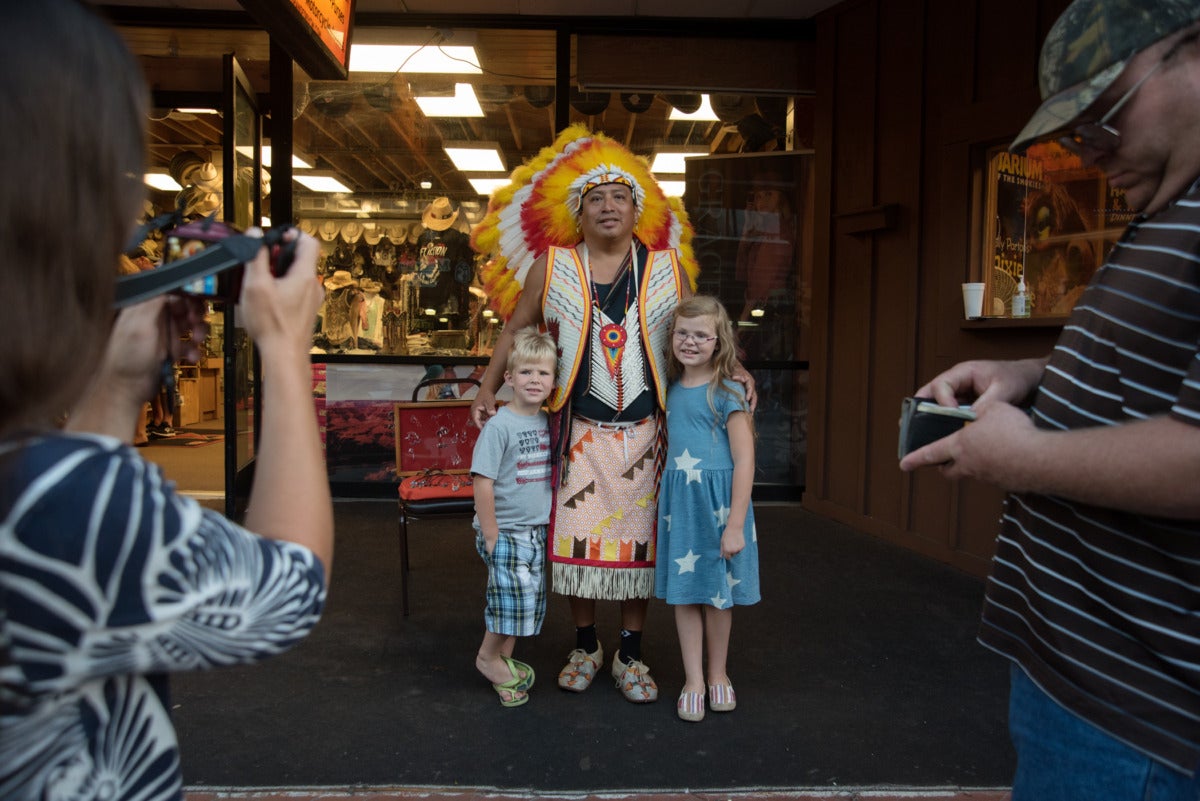
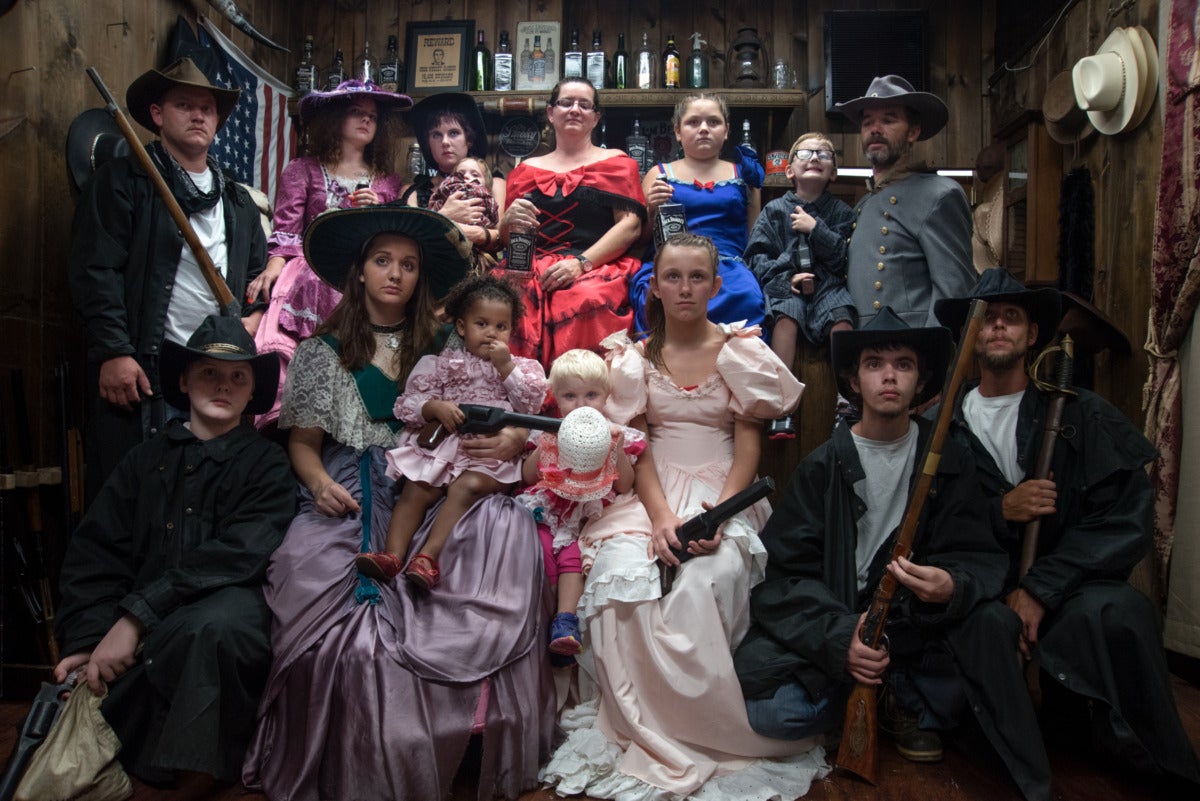
Some Eastern Band Cherokee participate in the art of chiefing. They dress up like Indians from the western part of the United States because American tourists are most used to seeing pow wow-style clothing from inaccurate representations of native culture on television. While these outfits are not historically accurate, they work well to attract tourism dollars. Roadside chiefs can make a good living from tips by performing for tourists and posing for pictures with travelers entering and leaving the Great Smoky Mountains National Park.
I’m not the only one interested in using photography to perpetuate a fantasy version of myself. Old-time photo studios encourage tourists to enact theatrical mountain stereotypes. Some of them are connected to the history of the Smokies (see the hillbilly moonshine set and costumes), while others bear no relationship to the region’s history at all. You can be photographed in a gangster outlaw moonshine shootout, an antebellum parlor, or a western outlaw cowboy showdown.
Cades Cove, the most popular destination in the park, offers a glimpse of life in the past. Visitors appear to crave a connection to a lifestyle and culture that was once considered expendable. Some say Appalachia did not exist until it was discovered and reinvented by those wishing to transform it. The park expedited the loss of Highlander culture through its removal of families only to recreate living history facsimiles of the communities they forcibly erased. Tourists rove Cades Cove searching for a sanitized and nostalgic version of our American past from the comfort of their climate-controlled cars.
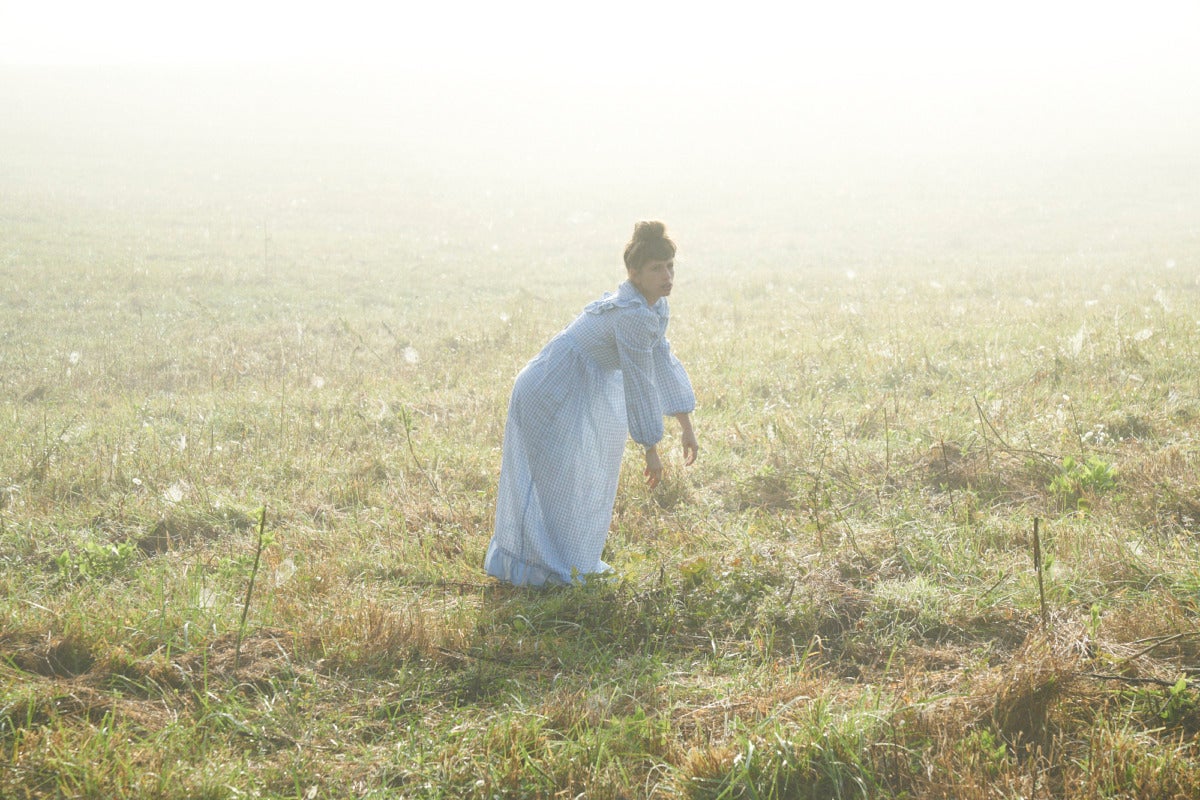
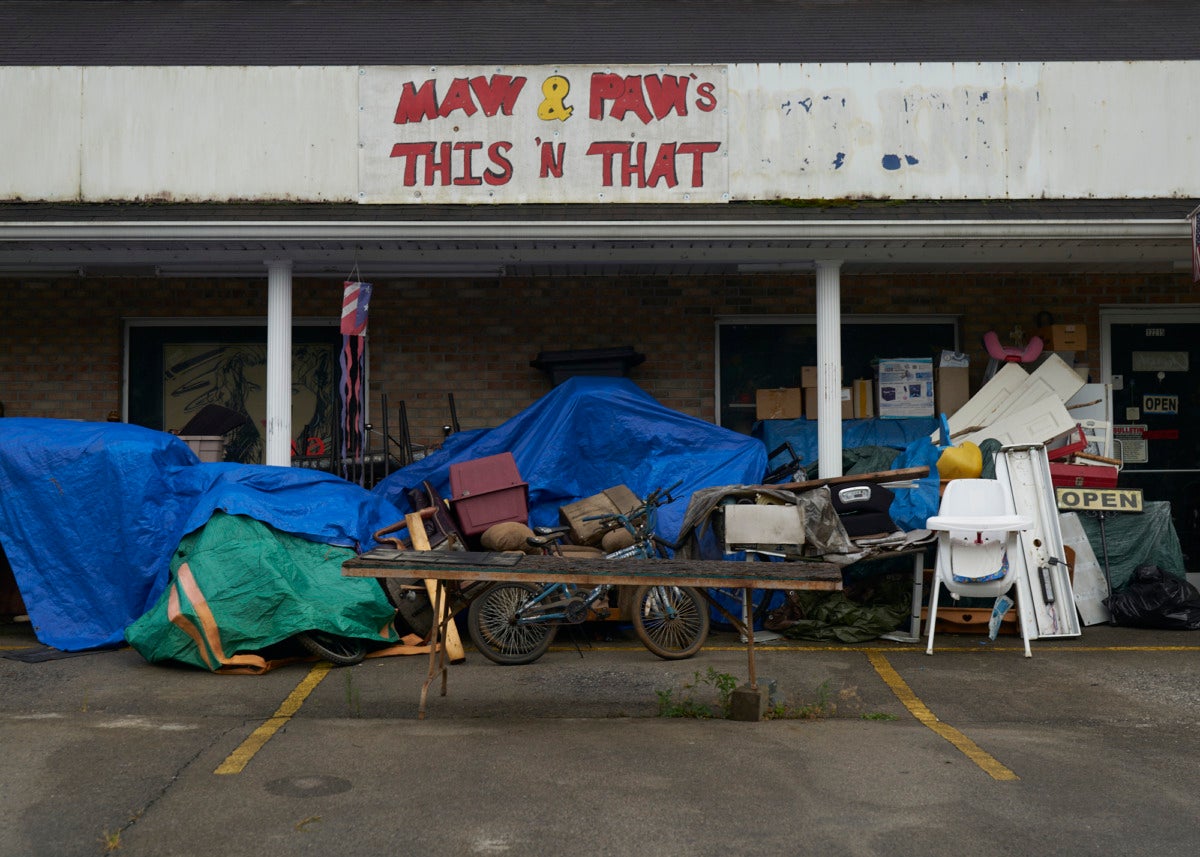
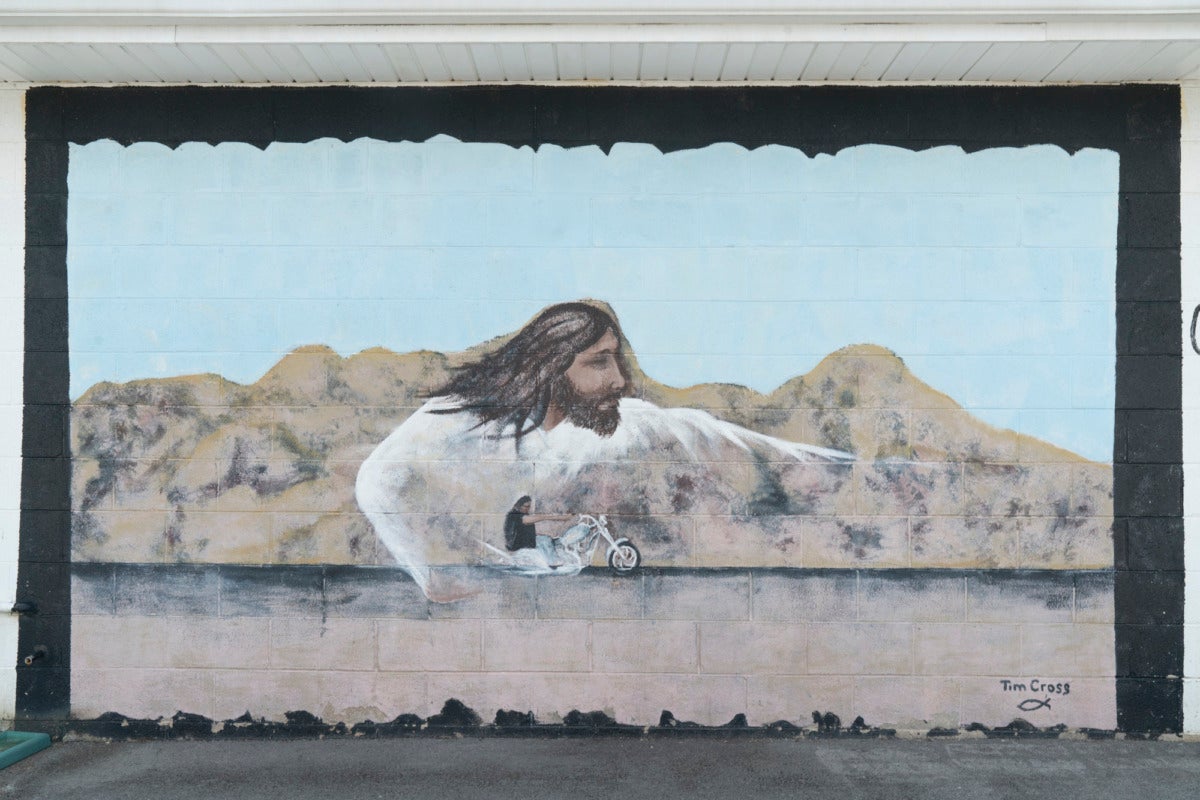
The Eastern Band Cherokee managed to hang on to a small fragment of their land and elude removal during the Trail of Tears with the help of William Thomas, an adopted member of the Cherokee Nation. He successfully negotiated the creation of the Qualla Boundary and then went on to serve as a colonel in the Confederate Army. The Eastern Band Cherokee relationship to the flag is bound up in their reverence for Thomas and represents an ongoing distrust of the American government. Some Cherokee fought for the Union, while others captured and traded slaves.
The writer Cormac McCarthy was raised on the outskirts of Knoxville at the edge of Blount County. His first four novels include depictions of characters of the fringes of society who are subsumed by the violence of the Smoky Mountains. These books—The Orchard Keeper, Outer Dark, Child of God, and Suttree—offer a very different take on the region from the one spun together in the albums of Dolly Parton. McCarthy’s novels suffocate the reader in abject darkness and nihilism, the only antidote for which might be the resilience and faith in human goodness that are the driving force and ethos of Parton’s songs. For me, one version of this place cannot exist without the other.
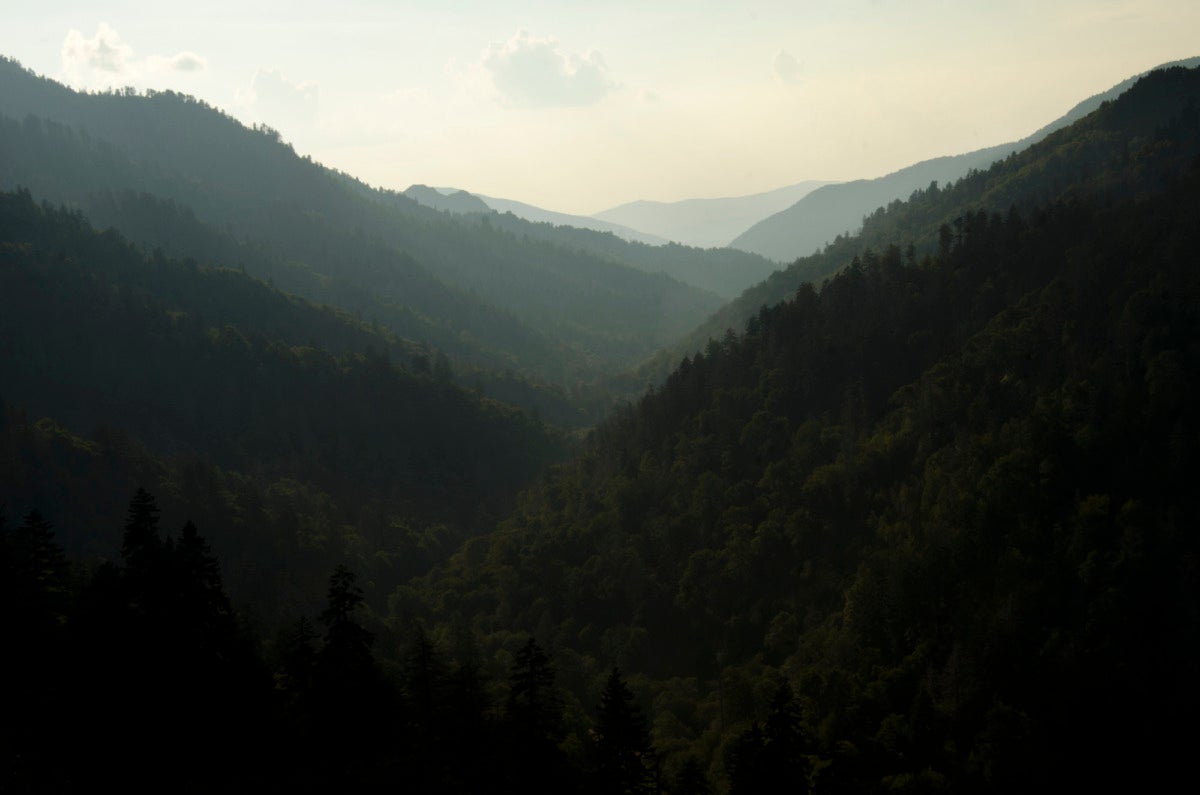
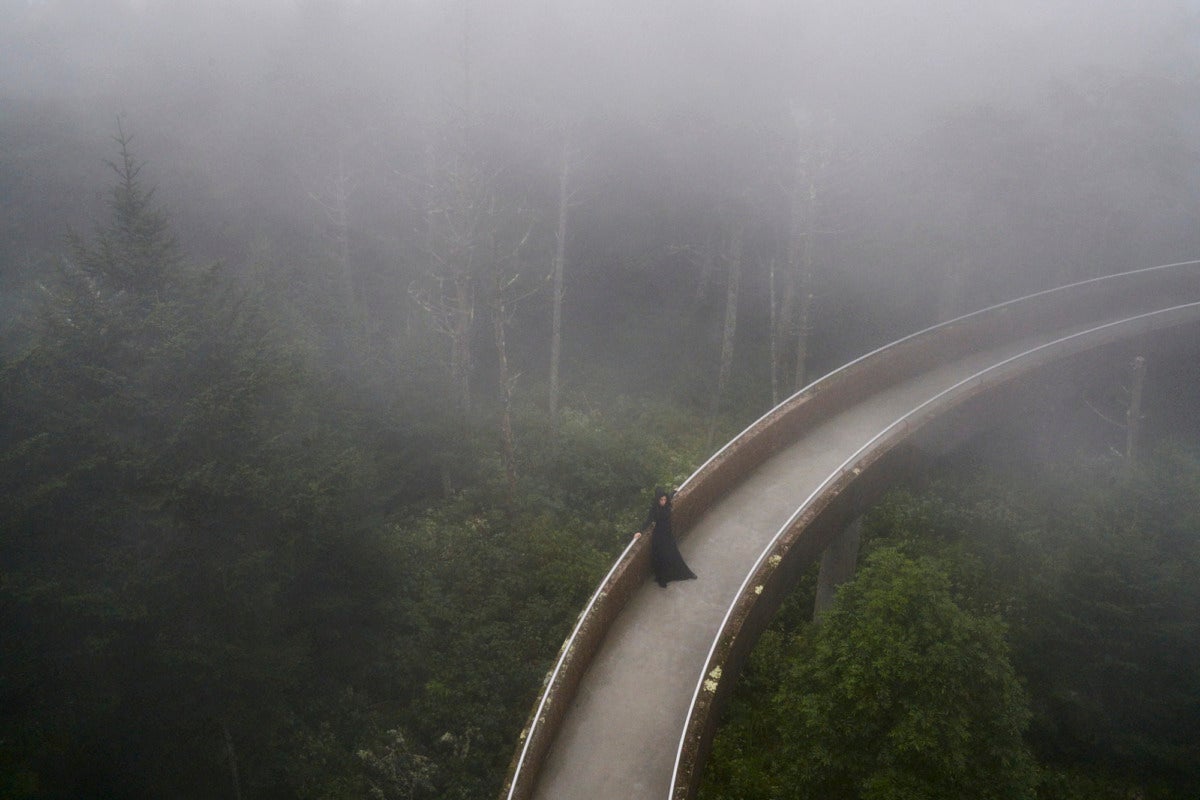
Clingmans Dome is the highest point in the Smokies. The Cherokee call it “Kuwa’hi,” which means “mulberry place.”
In 2010, lawmakers in Sevier County legalized moonshine distilleries. Now, in Pigeon Forge and Gatlinburg, Highway 441 boasts more than twenty moonshine stores. They tap into the heritage of hillbilly life and commodify it for tourists, who come to the Smoky Mountains looking to embrace authentic hillbilly culture and end up puking on the sky lift after drinking too many free sample shots.
Square dancing, clogging, and buck dancing are popular forms of entertainment in the Smoky Mountains. This style of dance has roots in England, Scotland, and Ireland but is also influenced by Cherokee and African American dance traditions. This style of dance was heavily featured in minstrel and medicine shows. The annual Tennessee Square Dance Convention takes place each August, and a group of young cloggers perform for free every night of the summer in downtown Gatlinburg to the amusement of tourists. Last year, they danced to both traditional mountain bluegrass and Cowboy Troy’s hick hop country rap masterpiece “I Play Chicken with the Train.”
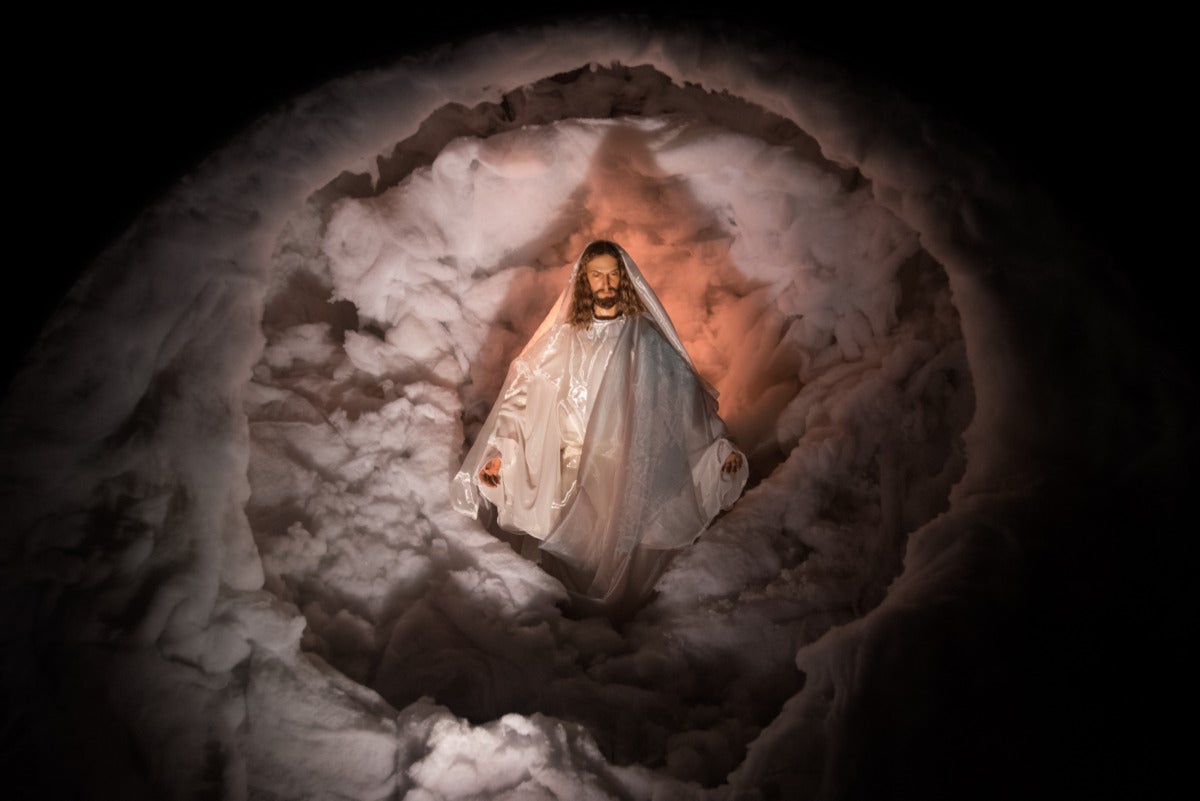
At Christ Museum and Gardens in Gatlinburg you can witness an animatronic Jesus rise out of thousands of fluffy white cotton balls.
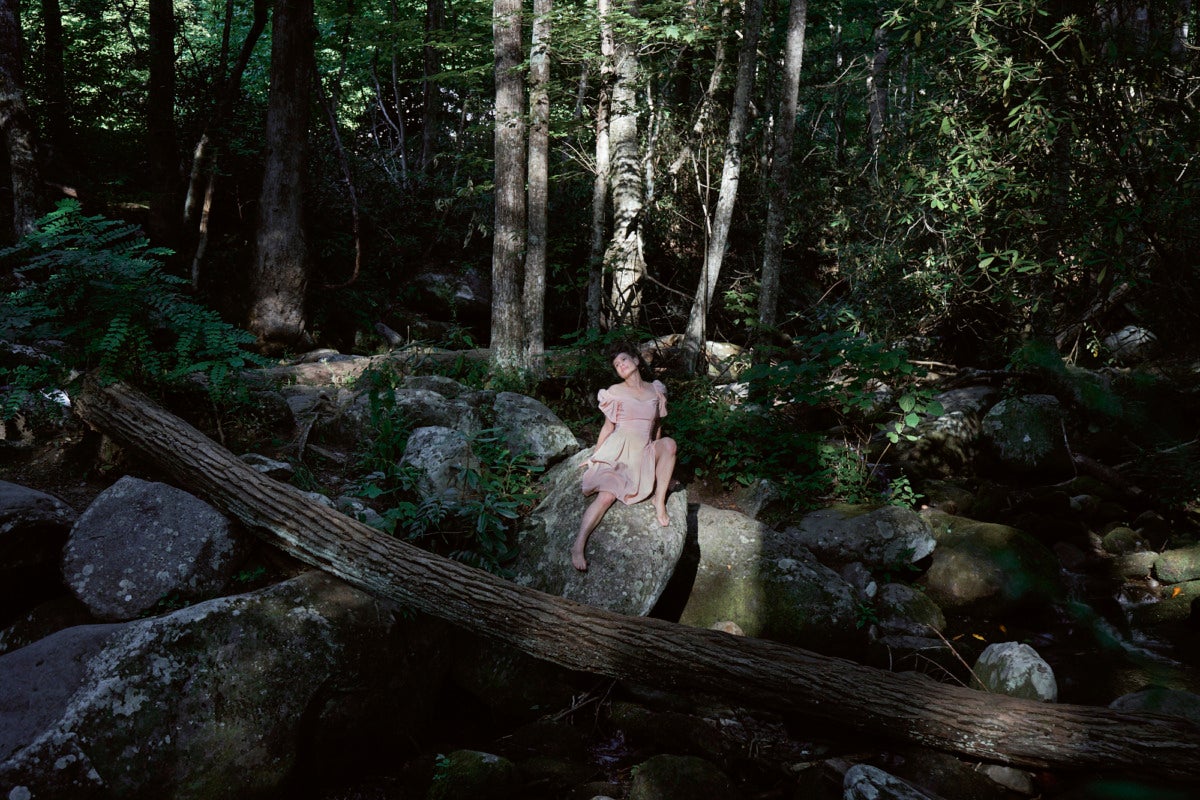

The feeling of natural splendor that we embrace as visitors of the Smoky Mountains has been manufactured for us. Hundreds of families were forcibly removed from their homes and relocated on land outside the park. During the campaign to gain support for the endeavor, park founders promised Highlander settlers that they could stay if they supported its formation. When the United States Congress approved the park in 1934, conservationists immediately set out to remove families.
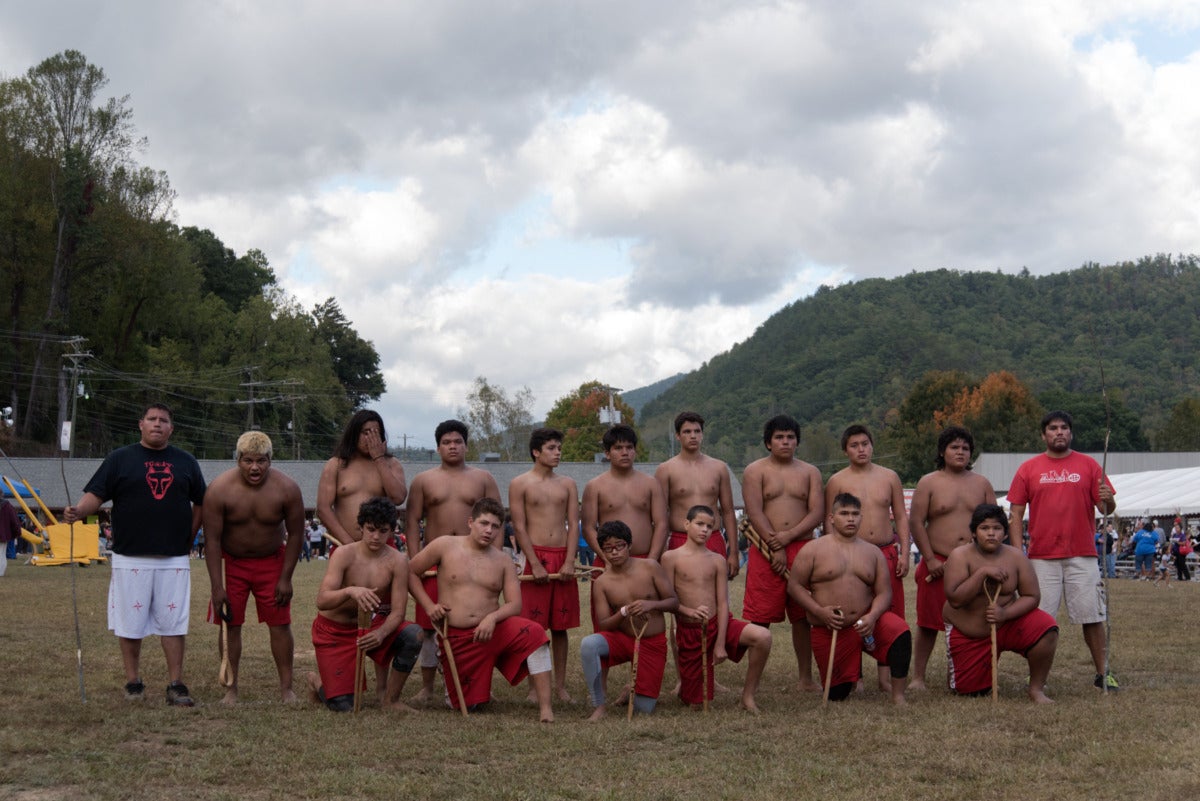
Cherokee stickball is an ancient sport once used to settle tribal disputes. Teams compete during the Cherokee Fall Festival, which takes place annually in early October. The festival was developed in 1914 by the Bureau of Indian Affairs Cherokee Indian Agency as part of an effort to teach native families better hygiene, parenting skills, and progressive farming techniques. Over the years, the festival was reclaimed by the community to celebrate its heritage.
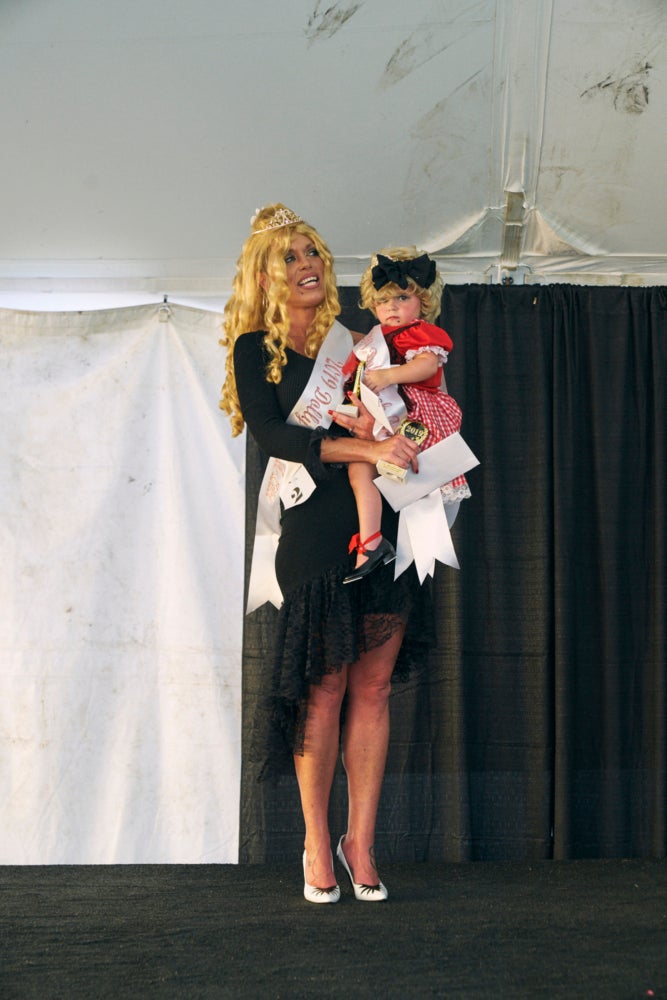
When the national park was formed, the Eastern Band Cherokee created attractions targeting tourists heading into out of the Smoky Mountains. In the early years, they built Native American-themed entertainment centers that reveled in historically inaccurate depictions found in popular western movies. Businesses utilizing the native stereotypes most familiar to white American tourists were more successful than those that tried to portray a more authentic version of Cherokee history. Harrah’s Cherokee Casino Resort opened its doors in 1997. The tribe utilized casino profits to revamp their tourism agenda and provide better social services for the its citizens. The success of the casino allowed the Cherokee to renovate the museum and improve the Oconaluftee Indian Village.
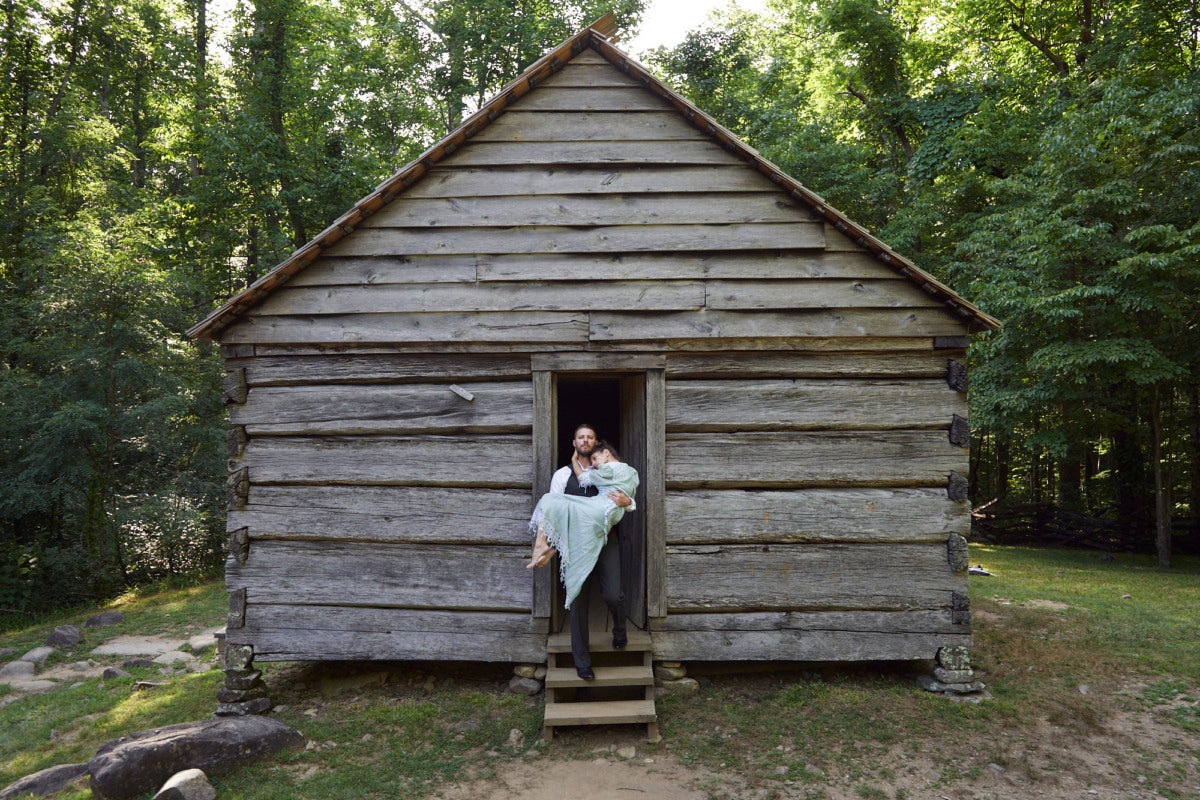
The story of Christy is based on Catherine Marshall’s mother’s experience as a missionary in Del Rio, Tennessee. In the novel, Christy is pulled between spirituality and science, faith and fact, as she chooses between two suitors: the Reverend David Grantland and Doctor Neil MacNeill.
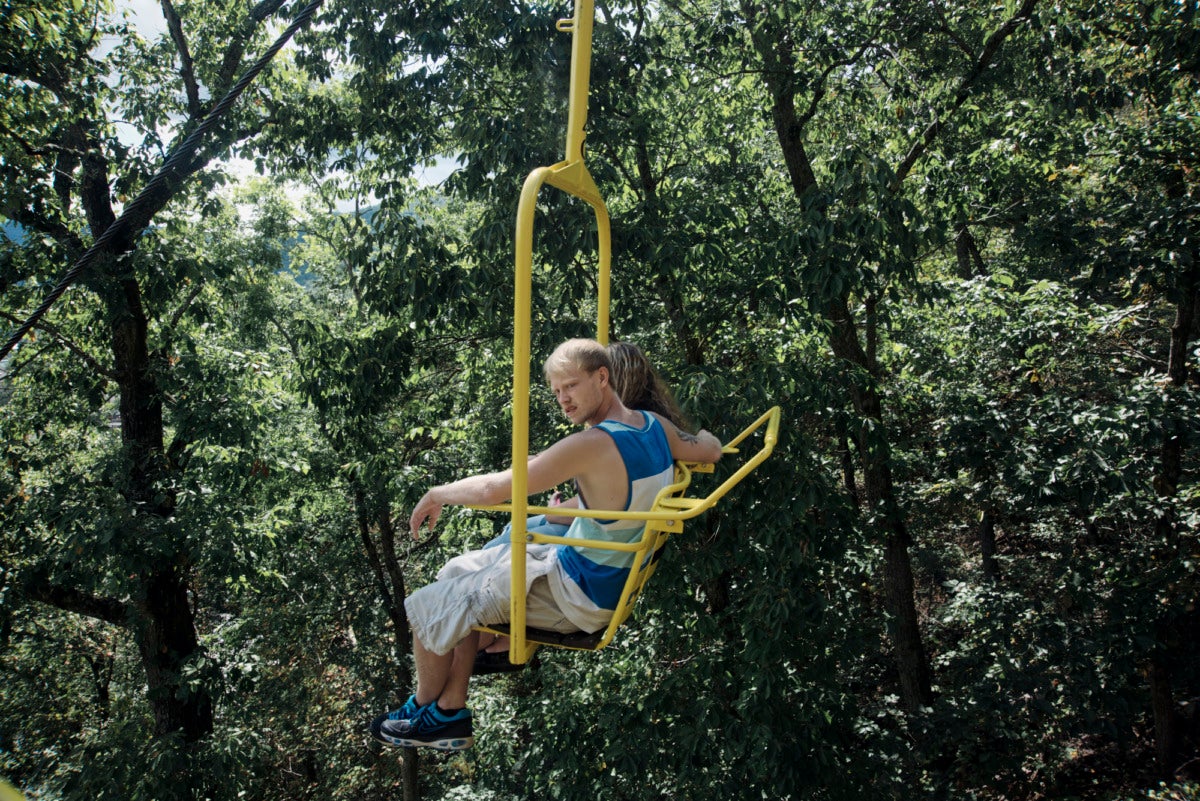
At the end of the Werner Herzog film Stroszek, the lead character, Bruno, finds himself in Cherokee, North Carolina. In a film that offers a moving exploration of the harsh realities of the unrealized American dream, Herzog leaves us in the Smoky Moutains. Overcome with the grief of his circumstances, Bruno decides to ride the skylift, and as he climbs high up the mountain, he shoots himself in the head. Every time I ride the lift, I think about poor Bruno. I think about how we are all bound in a nihilism that the mountains both exacerbate and ameliorate.

Herzog’s Stroszek is not so different from Barbra Loden’s Wanda. At the end of the Loden film, Wanda pleads with a judge to send her to jail because it is preferable to being trapped in a world where she has no power but is sold the illusion that she does. At least in jail the circumstances of her powerlessness are clearly defined.
